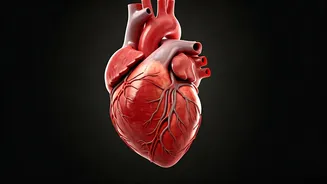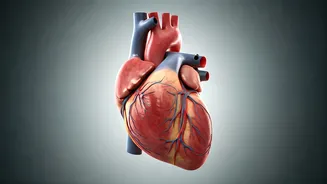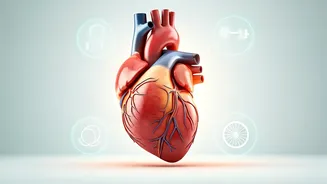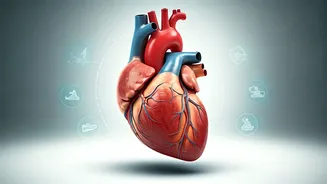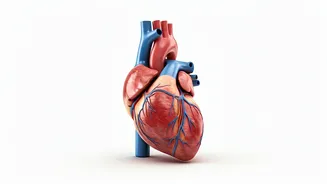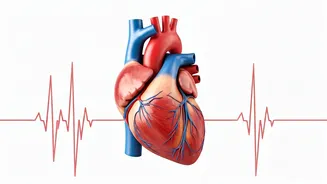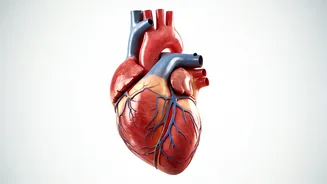Brisk Walking Benefits
Brisk walking is a fantastic starting point for heart health improvement. It is a straightforward activity requiring no special equipment, making it highly
accessible to almost everyone. Regular brisk walking helps to lower blood pressure and reduce LDL cholesterol, often called 'bad' cholesterol, while simultaneously elevating HDL cholesterol, known as 'good' cholesterol. To gain the advantages of this exercise, aim for at least 30 minutes of brisk walking most days of the week. Remember to maintain a pace where you can talk, but not sing. Varying your routes and including inclines can add variety and further enhance your workout. Start slowly, gradually increasing the duration and intensity as your fitness improves, and stay consistent to experience the benefits of this easily incorporated exercise.
Swimming's Gentle Power
Swimming offers a full-body workout that's gentle on the joints, making it a great option for people of all ages and fitness levels. This low-impact exercise improves cardiovascular fitness by increasing your heart rate and improving circulation without putting stress on your joints. Swimming helps to strengthen your muscles and increase flexibility. It can be particularly beneficial for those with arthritis or other joint issues, as the buoyancy of the water reduces the impact of movement. Incorporating swimming into your routine for 20–30 minutes, several times a week, can lead to significant improvements in heart health. Varying your strokes—freestyle, backstroke, breaststroke, and butterfly—can engage different muscle groups and make your swimming sessions more enjoyable and effective.
Cycling for Heart Health
Cycling is another excellent choice for boosting heart health and enjoying a low-impact workout. Whether you're riding a stationary bike at home or exploring the outdoors on a bicycle, cycling provides a sustained cardiovascular workout that strengthens your heart. It enhances blood flow, reduces blood pressure, and improves overall stamina. Regular cycling sessions can help in burning calories and maintaining a healthy weight, which is essential for heart health. To maximize the benefits, aim for at least 30 minutes of cycling at a moderate intensity, most days of the week. Adjust the resistance or terrain to increase the challenge and keep your workout engaging. Cycling is a fantastic activity suitable for individuals of all ages and fitness levels, promoting an active and heart-healthy lifestyle.
Yoga: Mind, Body, Heart
Yoga, a practice that combines physical postures, breathing techniques, and meditation, offers a unique way to enhance heart health. It reduces stress and anxiety, which are significant contributors to cardiovascular disease. Yoga improves flexibility, strength, and balance, while promoting relaxation. Certain yoga poses can gently stimulate the heart and improve circulation. Regular yoga practice can also help lower blood pressure and cholesterol levels. To incorporate yoga into your routine, find a class or follow online videos, aiming for sessions of 15–30 minutes, a few times a week. Focus on deep breathing and mindful movement to maximize the benefits. Yoga is a holistic practice that nurtures both your physical and mental well-being, fostering a heart-healthy lifestyle.
Strength Training Benefits
Strength training, even in a low-impact form, is vital for heart health. Building muscle mass supports overall metabolic health and helps in burning calories. It also helps to improve insulin sensitivity, which is crucial for preventing type 2 diabetes, a major risk factor for heart disease. Using light weights, resistance bands, or even your body weight can provide effective strength training. Aim to target all major muscle groups at least twice a week, performing exercises like squats, push-ups, and bicep curls. Remember to start with lighter weights and gradually increase the resistance as you get stronger. Strength training not only benefits your heart but also boosts your metabolism, improves bone density, and enhances your overall quality of life. Always listen to your body and rest when needed.
Dancing into Fitness
Dancing is a fun, engaging, and heart-healthy exercise that can significantly improve your cardiovascular fitness. It is a fantastic way to elevate your heart rate, improve circulation, and burn calories. Dancing can also enhance your coordination, balance, and flexibility. Various dance forms—from salsa and Bollywood to simple ballroom—offer diverse options to enjoy a heart-healthy workout. Choose a dance style that you enjoy and aim for at least 30 minutes of dancing several times a week. Dancing is an excellent way to relieve stress, boost your mood, and improve your heart health. So, put on some music, move your body, and experience the joy and health benefits of dancing.
Tai Chi's Calming Power
Tai Chi, an ancient Chinese practice, combines gentle movements, deep breathing, and meditation to improve both physical and mental health, including heart health. It is particularly effective in reducing stress, improving balance, and lowering blood pressure. Regular Tai Chi practice can enhance cardiovascular function and promote relaxation. The slow, flowing movements are easy on the joints, making it suitable for people of all ages and fitness levels. To incorporate Tai Chi, attend a class or follow online tutorials, aiming for sessions of 20–30 minutes, a few times a week. Focus on the gentle movements and mindful breathing to maximize the benefits. Tai Chi offers a holistic approach to fitness, helping to calm the mind and strengthen the body, which contributes to a healthier heart.
